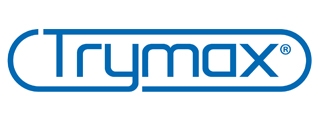Semiconductor Silicon Wafer Market to See 5.7% Annual Growth

Sensor-based IoT innovation and the drive toward big data and artificial intelligence are two factors driving growth in the global semiconductor silicon wafer market, according to a report by BCC Research, “Global Semiconductor Silicon Wafer Market.”
The market expects to see a compound annual growth rate (CAGR) of 5.7% through 2023, when it could be worth $21.3 billion.
Major players in the market include: 3M (MMM), Applied Materials (AMAT), Intel (INTC) and Toshiba (TOSYY).
Research Highlights
• North America’s semiconductor wafers market should grow from $4.5 billion in 2018 to $5.8 billion by 2023 with a compound annual growth rate (CAGR) of 5.4% for the period of 2018-2023.
• EMEA semiconductor wafers market should grow from $4.0 billion in 2018 to $5.1 billion by 2023 with a compound annual growth rate (CAGR) of 5%.
• After registering a value of $1.10 per square inch in 2017, the average selling price (ASP) for semiconductor silicon wafers (not including solar/photovoltaic cells) will change from $1.18 per square inch in 2018 to $1.20 per square inch in 2023: an increase of 2.1%.
Read the full report here: https://www.bccresearch.com/market-research/semiconductor-manufacturing/semiconductor-wafers-market-report.html
“Stability in the ASP (average selling price) will be largely due to price escalation in silicon wafers in 2018-2019,” writes analyst Shalini Ramamurthy. “Compound semiconductor wafers, on the other hand, will witness a steady decline in ASP. Silicon wafer manufacturing requires substantive investment and long gestation periods. Consequently, there are only a few wafer manufacturers large enough to influence pricing. The rest cater mainly to niche markets. Another pertinent observation is that the scale of operations in silicon wafers is substantially higher than in compound semiconductors. The ASP of silicon wafers is also much lower.
The Pattern of Price Fluctuations
For ASP movement, wafer manufacturers have historically resorted to a steady annual reduction in wafer prices followed by an occasional rise (once every few years) in response to rising input costs. This spike in prices is followed by a steady decline, yearly, which is expected as the input costs stabilize and manufacturers benefit from the depreciation of equipment. The spike in prices in 2018-2019 however, is expected to be sharp enough to keep prices on an even keel in 2023, compared to 2018 levels.





























































